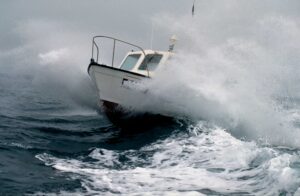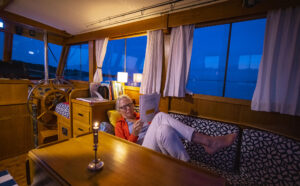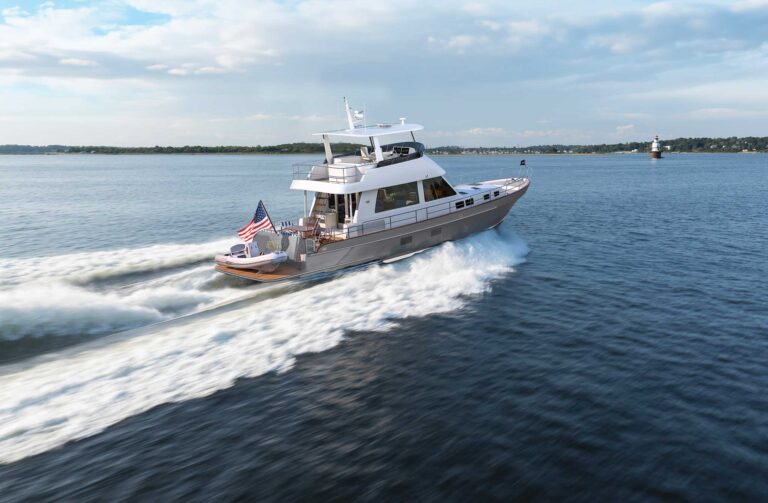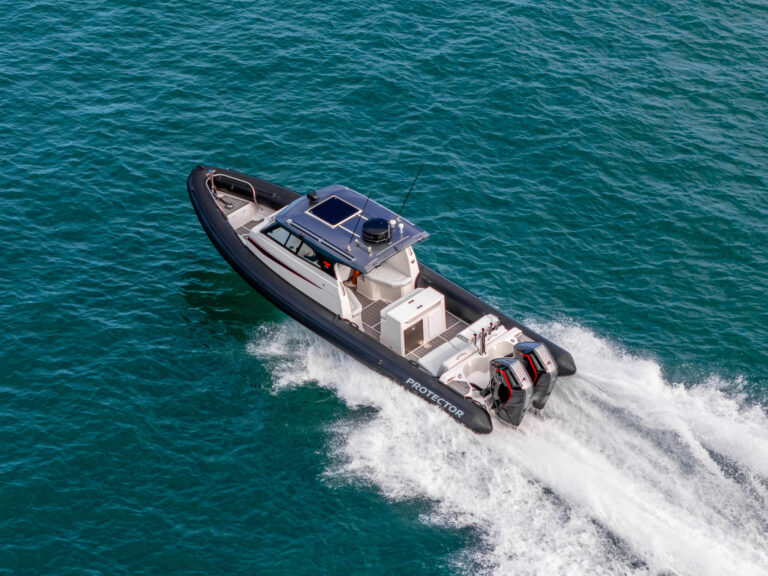Do enough cruising, and at some point you will have to deal with heavy weather. I discussed in Part One (February issue) the preparations for an approaching front that’s going to bring bad weather. If you’re offshore when rough conditions arrive, you have no option but to deal with it. Your tactics will depend on how rough it is, your crew’s experience and the type of boat you have.

Boat size has a lot to do with how best to handle nasty conditions. I’ve been out in Force 6 conditions — often called a yachtsman’s gale — in a 20-foot cruiser when the bigger sailing yachts were just taking happy advantage of the breeze. It’s all a matter of perspective. If you think the weather is heavy, it probably is. Of course, sailboats and powerboats behave differently when it gets rough, but initially the tactics for both are similar.
As wind and seas increase, the best course of action often is to turn the boat and run with it. Try not to take seas directly on the stern, though — it is usually far more comfortable to take the seas on the quarter. Run off at an angle of about 25 to 30 degrees to the front of the approaching sea. This offers less resistance than getting slapped full-on at the transom. Keep a sharp eye aft, and watch that waves don’t steer the boat around and cause a broach.
Fully retract the trim tabs on powerboats (if so equipped). Trim tabs in the down position can make rudder response sluggish or cause the boat to “trip,” steering the stern exactly the way you don’t want to go. It goes without saying, but the best helmsman should be on the wheel or tiller in heavy weather, keeping a sharp eye for larger waves or those that come from a different direction. The skipper may have to jockey the throttles to keep the boat in an ideal position.
In steep seas a boat may surf down waves, and if you’re going too fast you could easily bury the bow in the trough. This slows the boat abruptly, and the following sea can overwhelm the cockpit and flood the boat. It can be useful to tow a long warp in a large loop to help you maintain control. Made off one stern cleat, with the other end of the rope attached to the other cleat on the quarter, this can have a remarkable effect on slowing the boat. I recommend nylon lines — the stretchiness helps prevent the loads from jerking — and you’ll have to experiment with length, preferably before conditions deteriorate.
Another method of controlling a sailboat in poor conditions is heaving-to — a heavy-weather tactic that is as old as sailing. To heave-to, sheet the foresail to weather, sheet the mainsail in hard and lash down the tiller or wheel to leeward. The principle is that the boat will try to sail itself into the wind, but the backed headsail will work against the mainsail and rudder, and prevent the boat from coming up into the wind and going about. It’s important to have just enough sail up to retain control, but when done properly the result is amazing. Everything calms down, the noise diminishes, and the boat rides the waves like a duck, allowing crew to rest and ride out the worst of the weather.
Boats with a long keel tend to heave-to far better than boats with a fin keel, but given the right amount of sail almost any boat can use this tactic. Practice in less arduous conditions so you can perfect the technique, which isn’t just for rough conditions. I often use it when I’m sailing alone if I’m going to cook, take a sextant sight or just need a breather from the helm.
On those occasions when you want to keep going but the boat is going too fast down the front of waves, consider deploying a drogue, which has a remarkable effect on slowing a boat. There are various types, makes and styles, but they all create drag to reduce speed. It is essential to buy the correct size for your boat. Drogues put tremendous strain on deck fittings, and they can be streamed from a single point or from a bridle to spread the load. They should be made fast to something more robust than a cleat, which can easily rip out under load. Sailboat winches and mooring bitts are ideal. Use chafing gear and be vigilant about checking lines. Even thick lines can wear quickly.
One final thought: During the disastrous 1979 Fastnet Race, a worse-than-expected storm slammed the fleet. Many boats were abandoned, and some of those boats, left to their own devices, were found several days later, battered but afloat. Though life rafts saved many sailors, some capsized and some fell apart. It’s not always the boats that founder, but the crews that give up. Be prepared.
This article originally appeared in the April 2016 issue.










